Parthenolide
Synonym(s):Parthenolide, Tanacetum parthenium - CAS 20554-84-1 - Calbiochem
- CAS NO.:20554-84-1
- Empirical Formula: C15H20O3
- Molecular Weight: 248.32
- MDL number: MFCD00134592
- EINECS: 692-532-0
- SAFETY DATA SHEET (SDS)
- Update Date: 2025-01-27 09:38:02
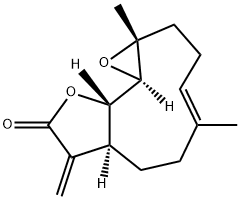
What is Parthenolide?
Description
Parthenolide is an allergen in feverfew (Tanacetum parthenarium).
Chemical properties
White solid
The Uses of Parthenolide
Parthenolide is a sesquiterpene lactone from the plant feverfew (T. parthenium). It inhibits the growth of the promastigote form of L. amazonensis (IC50 = 3.6 μg/ml). Parthenolide also induces apoptosis in cancer cells, at least in part by inhibiting NF-κB- and STAT-mediated anti-apoptotic gene transcription. This compound has also been shown to block inflammation by inhibiting signaling through NF-κB. Inhibition of NF-κB by parthenolide can be achieved by direct binding of the pattern recognition receptor NOD2 by parthenolide.
The Uses of Parthenolide
Antiinflammatory;MAP kinase inhibitor
The Uses of Parthenolide
Parthenolide is an anti-inflammatory agent used in the treatment of ischemic injury. Also acts as an anti-tumor and anti0leukemia agent targetting acute myeloid leukemia.
Background
Parthenolide has been used in trials studying the diagnostic of Allergic Contact Dermatitis.
What are the applications of Application
Parthenolide is an inhibitor specifically inhibits HDAC1 without affecting other class I/II HDACs
Definition
ChEBI: A sesquiterpene lactone and active principle of Feverfew (Tanacetum parthenium).
General Description
This substance is a primary reference substance with assigned absolute purity (considering chromatographic purity, water, residual solvents, inorganic impurities). The exact value can be found on the certificate. Produced by PhytoLab GmbH & Co. KG
Biological Activity
The active principle of feverfew (Chrysanthemum parthenium), widely used as a herbal remedy for arthritis and migraine and as a febrifuge. Parthenolide is antisecretory, anti-inflammatory, spasmolytic and inhibits the release of 5-HT from blood platelets. Also inhibits generation of leukotriene B 4 and thromboxane B 2 .
Contact allergens
Parthenolide is a sesquiterpene lactone found Asteraceae- Compositae such as feverfew (Tanacetum parthenium Schultz-Bip.) or congress grass (Parthenium hysterophorus L.).
Biochem/physiol Actions
Parthenolide is a sesquiterpene lactone present abundantly in the leaves and flowers of Tanacetum parthenium. It exhibits anti-cancer properties for the treatment of invasive cancers. Parthenolide exhibits therapeutic effects against inflammation and migraine. It plays a role in signal transduction and activation of transcription (STAT)-inhibition-mediated transcriptional repression of pro-apoptotic genes.
Metabolism
Not Available
References
1) Kwok et al. (2001), The anti-inflammatory natural product parthenolide from the medicinal herb Feverfew directly binds to and inhibits IkappaB kinase; Chem. Biol., 8 759 2) Hwang et al. (1996), Inhibition of the expression of inducible cyclooxygenase and proinflammatory cytokines by sequiterpene lactones in macrophages correlates with the inhibition of MAP kinases; Biochem. Biophys. Res. Commun., 226 810 3) Barsby et al. (1992), Feverfew extracts and parthenolide irreversibly inhibit vascular responses of the rabbit aorta; J. Pharm. Pharmacol., 44 737 4) Sumner et al. (1992), Inhibition of 5-lipoxygenase and cyclo-oxygenase in leukocytes by feverfew. Involvement of sesquiterpene lactones and other components; Biochem. Pharmacol., 43 2313 5) Groenewegen et al. (1990), A comparison of the effects of an extract of feverfew and parthenolide, a component of feverfew, on human platelet activity in-vitro; J. Pharm. Pharmacol., 42 553
Properties of Parthenolide
| Melting point: | 115-116 °C (lit.) |
| alpha | D20 -81.4° (c = 1.04 in chloroform); D22 -71.4° (c = 0.220 in CH2Cl2) |
| Boiling point: | 394.1±42.0 °C(Predicted) |
| Density | 1.13±0.1 g/cm3(Predicted) |
| storage temp. | -20°C |
| solubility | Soluble in DMSO (up to 100 mg/ml) or in Ethanol (up to 20 mg/ml) |
| form | White solid |
| color | White |
| Merck | 14,7048 |
| Stability: | Stable for 1 year from date of purchase as supplied. Solutions in DMSO or ethanol may be stored at -20° for up to 3 months. |
| InChI | InChI=1S/C15H20O3/c1-9-5-4-8-15(3)13(18-15)12-11(7-6-9)10(2)14(16)17-12/h5,11-13H,2,4,6-8H2,1,3H3/b9-5+/t11-,12-,13+,15+/m0/s1 |
| CAS DataBase Reference | 20554-84-1 |
Safety information for Parthenolide
| Signal word | Warning |
| Pictogram(s) |
 Exclamation Mark Irritant GHS07 |
| GHS Hazard Statements |
H317:Sensitisation, Skin |
| Precautionary Statement Codes |
P280:Wear protective gloves/protective clothing/eye protection/face protection. P302+P352:IF ON SKIN: wash with plenty of soap and water. |
Computed Descriptors for Parthenolide
| InChIKey | KTEXNACQROZXEV-PVLRGYAZSA-N |
| SMILES | O1C(=O)C(=C)[C@]2([H])CCC(C)=CCC[C@@]3(C)O[C@]3([H])[C@@]12[H] |t:10| |
New Products
3-Iodophenylacetic acid 3-Pyridineacetonitrile, α-hydroxy- 2-Propanamine, 1-chloro-, hydrochloride (9CI) 3-(hexyloxy)-4-(pyridin-3-yl)-1,2,5-thiadiazole 2-Hexyn-1-ol Dibenzo-18-crown-6 Nickel(II) perchlorate hexahydrate, 98% 4-Bromophenylacetonitrile, 95% 3-Bromo-4-fluoroaniline, 97% Sodium tetraborate decahydrate, 98% Palladium(II) acetate, trimer, Pd 99% 4-Bromo-2-chlorotoluene, 97% N N Dimethylformamide Dimethyl Acetal (Dmf Dma) 2,3-Dichloro Benzoyl Cyanide [Side Chain] Bis(2-Chloroethyl) Amine Hydrochloride L-Glutamic Acid Diethyl Ester Hydrochloride 5-(Difluoromethoxy)-2-Mercaptobenzimidazole 1-Ethyl-3-(3-Dimethylaminopropyl)-Carbodiimide Hydrochloride [EDC Hcl] 1,4-Napthoquinone Bromoiodomethane Sodium Bicarbonate Methylene Dichloride (MDC) Ethyl Acetate Indole-3-Carbinol (I3C)Related products of tetrahydrofuran
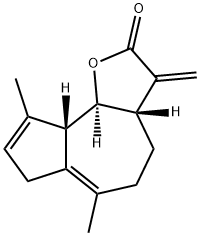
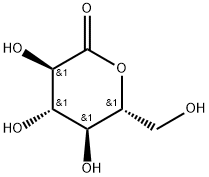

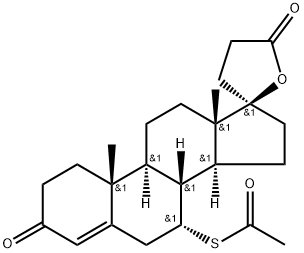


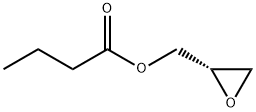

You may like
-
 Parthenolide CAS 20554-84-1View Details
Parthenolide CAS 20554-84-1View Details
20554-84-1 -
 Parthenolide 98% (HPLC) CAS 20554-84-1View Details
Parthenolide 98% (HPLC) CAS 20554-84-1View Details
20554-84-1 -
 Parthenolide 95% CAS 20554-84-1View Details
Parthenolide 95% CAS 20554-84-1View Details
20554-84-1 -
 Parthenolide CAS 20554-84-1View Details
Parthenolide CAS 20554-84-1View Details
20554-84-1 -
 Parthenolide CAS 20554-84-1View Details
Parthenolide CAS 20554-84-1View Details
20554-84-1 -
 Parthenolide CAS 20554-84-1View Details
Parthenolide CAS 20554-84-1View Details
20554-84-1 -
 Parthenolide, Tanacetum parthenium CAS 20554-84-1View Details
Parthenolide, Tanacetum parthenium CAS 20554-84-1View Details
20554-84-1 -
 132945-75-6 (S)-1-Boc-3-methanesulfonyloxy-pyrrolidine 98+View Details
132945-75-6 (S)-1-Boc-3-methanesulfonyloxy-pyrrolidine 98+View Details
132945-75-6
